PPP Lender Accounting and Reporting Issues
Lender institutions face a variety of issues when it comes to PPP lending. These include, but are not limited to proper accounting of the PPP loan itself and related fees as well as various restructuring of loans. On June 30, 2020 the AICPA issued a set of technical questions and answers (TQA’s) to address some of these issues. Listed below is a summary of some of the common issues that PPP lenders will face.
Classification of Advances Under the Paycheck Protection Program
Question: Should the lending institution account for an advance under this program as a loan or as a facilitation of a government grant?
The instrument is legally a loan with a stated principal, interest, and maturity date. The institution is expected to collect amounts due from either the borrower or the Small Business Administration (SBA) as guarantor. The institution should account for this instrument as a loan.
Accounting for the Loan Origination Fee Received From the SBA
Question: What is the accounting for the fee received or receivable from the SBA for originating the loan. How would the clawback feature/considerations be accounted for?
Upon funding of the loan, the fee should be accounted for as a nonrefundable loan origination fee under FASB ASC 310-20, Receivables—Nonrefundable Fees and Other Costs. As a result, it should be offset against loan origination costs and deferred in accordance with FASB ASC 310-20-25-2 and amortized over the life of the loan (or estimated life if prepayments are probable and the timing and amount of prepayments can be reasonably estimated and the entity qualifies and elects to apply the guidance in paragraphs 26–32 of FASB ASC 310-20-35) as an adjustment to yield in accordance with FASB ASC 310-20-35-2. However, institutions should determine the significant of the fees to their financial statements. Current policies may dictate that the fee and related expenses be recorded when received and incurred, respectively.
As noted in question .43, the loan guarantee is embedded in the loan and is part of the same “unit of account.” As a single unit of account, the arrangement involves multiple counterparties, which are (1) the lending institution, (2) the borrower, and (3) the SBA as guarantor, which through that role could be looked to for payment if the borrower either (a) provides the institution/SBA with documentation it has met the conditions to have the loan forgiven or (b) defaults on its obligation. The loan origination fee is paid to the institution by one of the counterparties, the SBA. In effect, the SBA is paying a loan origination fee that would have ordinarily been paid by the borrower. In certain program documents, the fee may be referred to as a processing fee, but the labeling of the fee is not determinative.
The fee received from the SBA for originating the loan may be subject to clawback (or if the SBA has not yet paid the fee, the fee may not be paid), after full disbursement of the PPP loan if
- the PPP loan is cancelled or voluntarily terminated and repaid after disbursement but before the borrower certification safe harbor date,
- the PPP loan is cancelled, terminated, or repaid after disbursement (and after the borrower certification safe harbor date) because SBA conducted a loan review and determined that the borrower was ineligible for a PPP loan, or
- the lender has not fulfilled its obligations under the PPP regulations.
In addition, lenders should consider guidance in FASB ASC 450, Contingencies, related to fees that may be subject to clawback or not received. If determined necessary, a lender would establish a loss contingency when it is probable that events or conditions precedent to a loss have occurred, and the resulting amount of the loss is estimable. The ability to estimate this contingent liability will be difficult for institutions since there is no historical data related to the loan program. However, clawback history will emerge over time related to each institution as well as publicly available information. Each institution should use information as available to support their assessment. Most loans under $2M likely will not be subject to the clawback provisions.
Reporting Considerations
Lenders will use the SBA form 1502 to report information on fully disbursed loans. Upon submission of form 1502, the SBA will initiate payment of the PPP processing fee. The SBA has published an interim final rule extending the deadline to electronically upload form 1502 reporting information to the later of (1) May 29, 2020, or (2) 10 calendar days after disbursement or cancellation of the PPP loan. On May 22, 2020 the SBA will begin accepting PPP 1502 forms on May 22, 2020. PPP loan information will be submitted to the SBA on a monthly basis. This would include loans that were cancelled or voluntarily terminated. Those that were repaid after disbursement will also be reported. It should be noted that if the lender sells a PPP loan, the originating lender would still be entitled to the processing fees.
Please contact a Brady Martz financial institution team member with additional questions. Our team is here to help.


